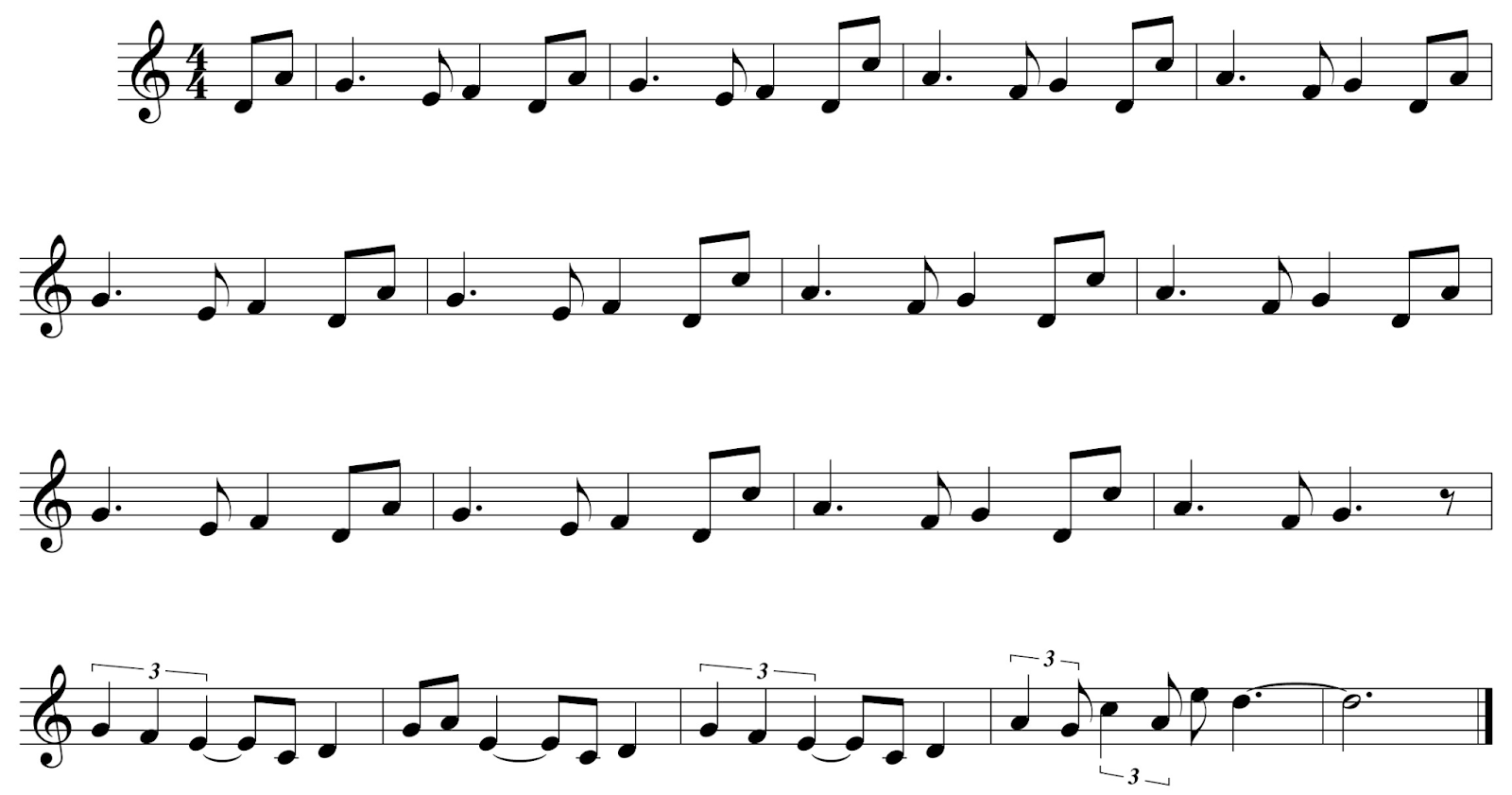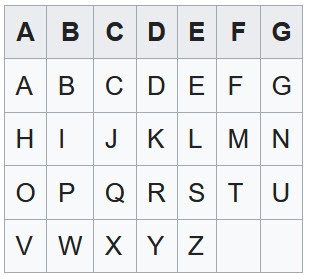
But also the letters of the Latin alphabet: A, B, C and so on. And once, it occurred to someone that it was possible to insert into musical works, short sequences of notes, which in literal expression denote someone's initials or even words. This method of encrypting information is called a musical monogram.
There are several approaches to creating musical monograms. For example, syllabic: vowels in the text were "assigned" phonetically similar names for notes. It is believed that in this work Josquin Despres, who lived in the 15-16th centuries, encoded in notes the phrase laisse faire moy - “do not bother me”.
And if you put notes in correspondence not with syllables, but with letters, then another problem arises: the letter designations of the notes - from A to G - are not typed for the entire Latin alphabet. Today it can be solved using the German or French methods.
The German method was used as early as the 18th century. Firstly, the Germans have a different order of letters for denoting notes: do-re-mi-fa-sol-la-si they are denoted as C, D, E, F, G, A, H. And secondly, the missing they received letter designations due to phonetic similarity: for example, the note E ♭ could encode both the letter s and the syllable es... And at the beginning of the 20th century, the French method appeared: one note could encode several letters of the alphabet at once in accordance with the simplest table (in the header - the designations of the notes):

That is, if you wish, you can encode in the form of a musical sequence any text from the letters of the Latin alphabet, including transliterated ones. However, hardly anyone will create such game, because the resulting music will certainly not have melody, and the artificiality of the scale will be so obvious that there will no longer be any encryption of speech. Most composers over the past centuries have limited themselves to inserting coded initials into their works, either their own or those to whom they dedicated their music. But even such short sequences, usually no longer than 4-5 notes, rarely sound organic. At least for the amateur's ear. Probably, connoisseurs of classical music will disagree with me, but judge for yourself:
Here in the introduction with notes BACH the surname of Ivan Sevastyanovich Bach is encoded:

This is not Liszt's find, but a tribute, Bach himself often inserted this sequence into his works. For example, here:
In total, at the moment, more than 400 works with this musical monogram are known.
Another popular example: Schumann scattered the A-Es-CH note sequence throughout his Carnival, which denotes his monogram SCHA and the name of the city ASCH, where he first fell in love.
An interesting example of musical encryption is the phrase "beware of Lyadov", recorded by Nikolai Myaskovsky in his String Quartet No. 3: B ♭, D, G♯, A, C, F = B, Re, Gis, La, Do, Fa. Lyadov taught musical composition at the St. Petersburg Conservatory.
And in the FAE Sonata, dedicated to the violinist and composer Joseph Joachim, the phrase Frei aber einsam is encrypted - "Free, but lonely":
As you can see, in order to organically fit a monogram into a work, you need talent, this is not a primitive shifting of letters to notes. The more difficult and interesting is the task of encrypting more and more long fragments of text in a scale so that it sounds like music, and not a cacophony.
▍ PS By the way, we remind you about our quest: https://royal.ruvds.com/ .
The second wire was cut this morning and the likelihood of the piano falling prematurely on the laptop is increasing. Now he is held by only 3 cables, and in the meantime there is still no winner who would have passed the quest and saved the cat!
This Friday, May 28 at 12:00, the laptop will be flooded with liquid nitrogen and a grand piano weighing 500 Kg will fall on it.
As our experts (chief building engineer) suggest, it will be very difficult for a laptop to survive a fall of a piano. Rather, literally, Petrovich assessed the situation as "a **** c laptop."
If you are in a stupor, here's a little tip . Re-read the post above and take a look at the piano keys on the site ...


